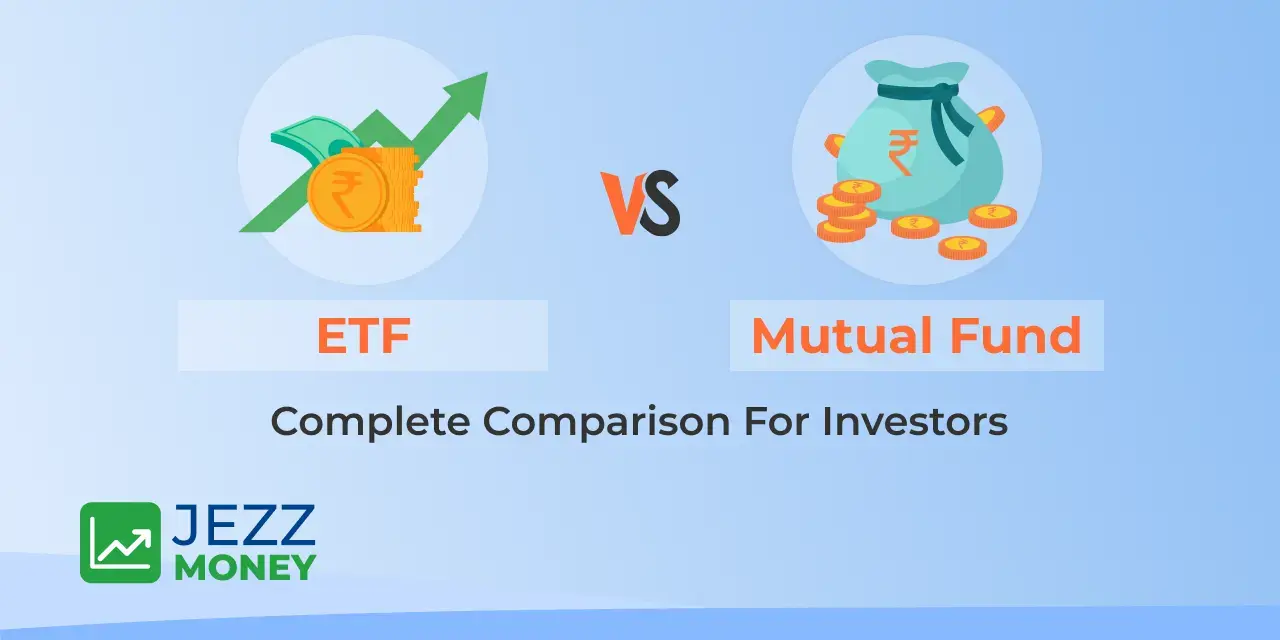Understanding the differences between ETFs and mutual funds is essential for making smarter investment decisions in India. Each product offers unique benefits, depending on an investor's style and goals. This detailed comparison will help you choose the option that aligns best with your financial strategy.
Investment Approach
ETFs in India primarily follow a passive investment strategy, meaning they replicate a benchmark index such as the Nifty 50, Sensex, or sector-specific indices. Since the goal is to match the index rather than beat it, ETFs generally involve little active decision-making by fund managers.
Mutual funds, however, offer both active and passive styles. Active mutual funds rely on professional fund managers who research, select, and rebalance portfolios to outperform the market, while passive mutual funds simply track an index. This flexibility gives mutual funds a broader range of strategies and risk levels, allowing Indian investors to choose based on their financial goals and risk appetite.
Trading Flexibility in India
A significant difference between the two lies in how they are traded. ETFs are bought and sold on stock exchanges like the NSE and BSE throughout the trading day, allowing investors to benefit from intraday price movements. To trade ETFs, investors must have both a Demat and a trading account, and brokerage charges apply.
Mutual funds, on the other hand, do not offer intraday trading. All purchases and redemptions are processed at the end-of-day Net Asset Value (NAV), providing a more straightforward but less flexible experience. This makes mutual funds more suitable for investors who prioritize convenience over real-time control.
Cost and Expense Ratio
Cost efficiency is one of the most significant advantages ETFs offer. Their expense ratios are typically much lower than those of actively managed mutual funds, making them an affordable option for long-term index exposure. ETFs also do not carry exit loads, though brokerage and Demat maintenance charges may apply.
Mutual funds often have higher expense ratios, especially for active equity schemes, and some may impose exit loads if units are redeemed within a specific period. Despite the higher fees, many investors find value in the expertise provided by active fund managers.
Tax Efficiency
In terms of taxation, ETFs have an edge. Equity ETFs follow the same tax rules as equity mutual funds, but their structure and lower portfolio turnover often lead to greater tax efficiency in practice. Some ETFs also benefit from in-kind creation and redemption processes, which can help reduce capital gains within the fund.
Equity mutual funds follow standard tax rules: short-term capital gains are taxed at 15%, and long-term gains above ₹1 lakh are taxed at 10%. Dividend distribution tax rules and the post-2023 taxation of debt funds—based on the investor's income slab—may affect the overall tax efficiency of specific mutual fund categories.
Diversification Options
Mutual funds offer far greater diversification choices in India. Investors can choose from equity, debt, hybrid, liquid, ELSS (tax-saving), and sectoral funds, making it easier to match the fund type with specific financial goals.
ETFs, by comparison, are more focused on index-based strategies and commodities. While the range of ETFs in India is growing, they still cover fewer segments than mutual funds, limiting diversification for those who want exposure beyond major indices or gold.
Liquidity and Accessibility
ETFs depend on market liquidity, which can vary significantly in India. Highly traded ETFs, such as Nifty or Gold ETFs, offer smooth transactions, while less popular ETFs may have wider bid-ask spreads.
Mutual funds provide greater accessibility, as investors can buy or redeem units directly through AMCs or mobile apps without a Demat account. For beginners or non-stock-market participants, mutual funds provide a more seamless experience, supported by automated SIPs and user-friendly digital platforms.
Which Option Suits Indian Investors?
The choice ultimately comes down to your investment style and comfort level. ETFs are an excellent fit for cost-conscious investors who prefer transparency and the ability to trade during market hours. Mutual funds serve investors who value professional management, structured long-term planning, and the convenience of SIPs without needing market involvement.
Given India's strong regulatory environment under SEBI and the growing maturity of both markets, many investors benefit from a balanced approach—using ETFs for low-cost index exposure and mutual funds for long-term, diversified wealth creation.
Both ETFs and mutual funds play an essential role in a diversified investment portfolio. The right choice depends on your risk appetite, time horizon, and how actively you want to manage your investments. A balanced mix of both can help Indian investors achieve stable, long-term financial growth.
